Small Form Factor PC – Case Build, Pros, Cons, Pro Tips.
You must have seen and heard of SFF PC case, with cube-shaped and tiny PCs taking the spotlight. These have become popular because of the rise of living room PCs, Steam Machines and streaming media players. While the smaller form factor PCs allows us to take with us, is it mean a powerful PC option?
For decades, console gamers have rubbed their compact sizes in our faces. But not any longer! With a small form factor (SFF) PC, we have also snatched this lead from them. Yes, of course, you can use the PC for many more purposes than gaming.
One of the most common questions that people have whether it’s worth getting an SFF PC case. Or is there any red flag to packing your PC in a small compact space?
To address this question, we will see what makes SFF different from regular cases, the benefits and cons you get with an SFF PC case, and give tips for optimizing your PC build in a small form factor PC case.
Guide to a Small Form Factor Case
What Qualifies As A Small Form Factor PC?
A small form factor PC is designed to take up less space, so your full-fledged PC can be put in tight places, like a PC cabinet for a home media unit. While reducing the size also means reducing some capabilities and performance. But in the case of power consumption, an SFF uses less power, which means lower bills.
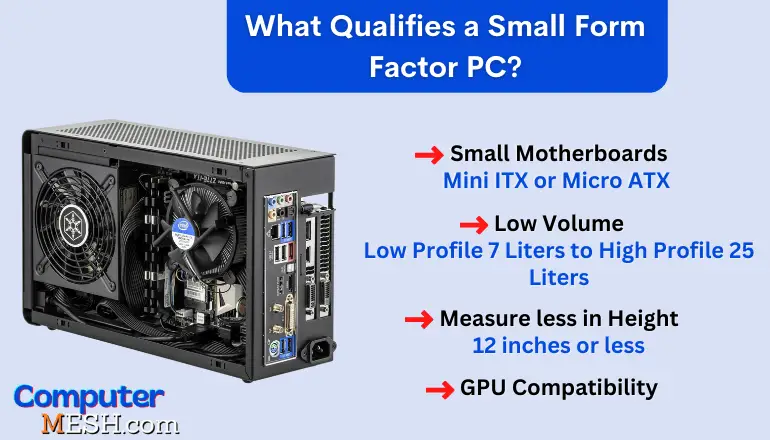
There are no hard rules to qualify a PC case as a small form factor. But what exactly qualifies as a small form factor PC? Generally speaking, small form factor PCs are those that measure 12 inches or less in size
Also, a standard-size ATX tower desktop usually has a volume of around 40-45 litres, whereas an SFF PC case is around half that volume value – 15-25 litres. But what really decides a small form factor PC build is the motherboard.
Small Form Factor Motherboards
You can fit a smaller motherboard in a bigger PC case, but not the opposite way. So, motherboards decide what PC case size you can get for your build. Here are some of the popular motherboards and their best use-case listed:
· Standard ATX
This won’t fit inside an SFF PC case as the standard ATX motherboard has 12in x 9 in dimensions, is commonly used in mid and full tower PC cases, and offers plenty of different expansion slots and good airflow.
· Micro ATX
The Micro ATX motherboards aren’t very tiny and have all the essential features without anything missing. They have 9.6in x 9.6in dimensions, are budget-friendly, and are used in small form factor builds.
· Mini ITX
For me, these motherboards define a small form factor as a small form factor. Mini ITX dimension is 6.7in x 6.7in; they are very compact and offer low-power and noiseless configuration.
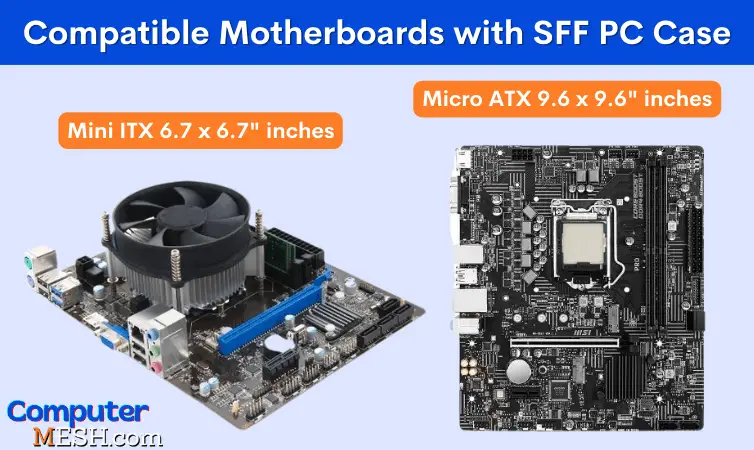
Thus, Mini ITX and Micro ATX are the motherboards can be fit in the small form factor PC case.
5 Pros Of Building A Small Form Factor PC
Small form factors are just regular PCs, only a lot smaller. And there’s nothing much that can go wrong with them. Here are some advantages of building a small form factor PC.
1. Takes Less Place and Saves Space
With a small form factor PC, you don’t have to dedicate half of your room to a tower desktop PC and its gigantic computer table. They take up very little space on the floor or none when mounted on a wall.

An SFF is perfect for setting up a home media unit. It can easily fit inside the cabinet under your big-screen Ultra-HD TV. And as streaming movies or tv-shows doesn’t require heavy computing power, your small form factor PC will comfortably do its job without overheating or becoming noisy.
2. Better Than AiOs
All-in-one (AiO) PCs come with a complete computer setup, and all the hardware (RAM, CPU,..) is housed in the display.
The benefit of using SFF PCs over AiO is that you can configure it. Not vastly, but at some extent you can upgrade your hardware components and add the features you require, whether for high-performance as mini PC for gaming or heavy-duty video editing, 3D rendering gear with a high-end graphics cards.
With an AiO, all of these options would be fixed and ultimately, what you are getting is a “tin box” that puts components together that would be better off being in your custom PC.
SFF is better because it gives you more freedom. But in AiO, you’re stuck with what you get. Consequently, AiOs aren’t very powerful as there’s even lesser room for appropriate cooling. SFF PCs, on the other hand, can offer better performance at a relatively lower cost.
3. Easy To Move Around (At Least than Desktop)
When it comes to heavy performance, laptops just don’t cut it (unless you are financially packed). Since SFF uses the same as desktop CPUs, they have way more processing power and a better graphics card, plus they’re harder to damage or steal.
If you travel a lot and want to take your PC on the go, small form factor PCs will make things more convenient. Besides, it would also make arriving at LAN parties less hassle.
4. Less Power Consumption
Since fewer components are installed inside the small form factor PC, the hardware operates more efficiently with lesser overall energy consumption.
A PC uses up a lot of power to keep itself cool. The more heat a machine puts out, the more energy it requires to keep it in check. In small cases, the temperature is always near room temperature as well as SFF PCs usually have fewer fans, lesser functionality, and low-powered components to prevent overheating and thermal throttling.
While in a large case is a house of larger power supplies, so the fan must work harder often to dissipate the heat and bring in cool air from the outside.
5. Clean And Aesthetic Build
Full-on tower PCs are overly popular and have become common everywhere. But you rarely see small form factor PCs, allowing you to stand out with an aesthetic and clean build with a curved monitor (with fewer wire clutter – characteristics of every PC).
There Must Be Shortcomings of Small Form Factor PCs, Right? (Cons)
Small form factor PCs are very convenient, however, a PC that is too small to be needed may have some problems wrapped up. These shortcomings feel more like a nuisance than actually putting a bottleneck on an otherwise very practical build.
Here are some of these drawbacks of the SFF PC case listed so you can understand better what I mean.
1. Hard To Tweak (Replacements or Upgrades)
With a small form factor PC, you don’t want to bother opening it up to tweak its components because they are packed in a very tight space. Want to access the storage drive? Would you mind removing (at least) the CPU cooler and the GPU first?
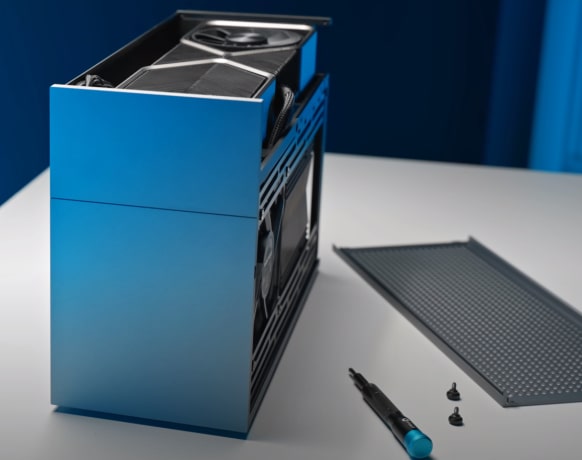
As there is limited space, you must carefully choose your SFF case size as per your graphics card, CPU cooler, RAM, processor, etc. I know you have been eyeing that bulky boy 3090 – It is bigger than Micro-ATX motherboards!
2. Thermal Throttle
As SFF PCs are built in a very compact space, there isn’t much room for several size of cooling fans and appropriate airflow. So, thermal throttling can become a serious issue with this build if you don’t carefully plan HDMI, display cable, power connectors, and fan placement.
3. Get Knocked Over Easily
Because SFFs are compact, they can get knocked over quite quickly. Perhaps you can get lucky one or two times that happens, but there’s only so much fall damage the delicate components can take.
4. Cost More Than Their Standard Counterparts
The only real shortcoming of small form factor PCs is the components designed specifically for them can cost more than their standard counterparts. This makes sense, though, as the components need to be carefully customized to fit in a tighter space.
8 Pro Tips For Building A Small Form Factor PC
The fundamentals of building a small form factor PC are similar to a standard PC build. The only thing that’s changed is the space available – which reduces the features (such as the number of RAM and storage slots) and makes you look closer at your cooling options.
Here are a few but significant pieces of guidance for building an SFF PC to help you tackle these challenges like a pro.
1. Get Low-Profile Fan Coolers
Providing proper cooling to your CPU is one of the biggest challenges in small form factor PC cases. Typically, CPU coolers are made quite bulky for this purpose, which doesn’t usually fit inside SFF PC cases.
So, you will need a CPU cooler which is low profile that does a decent job of cooling and doesn’t interfere with your RAM, motherboard, and PC case. Liquid cooling is also an option, but it isn’t recommended due to cost disadvantage of liquid cooler for novices, even in standard builds, let alone small form factor builds.
2. Plan Your Graphics Card Choices:
For small form factor PC cases, single-slot, low-profile, or half-length GPUs are installed. Again, they are standard graphics cards with memory customized for the small form factor, so their prices may vary.
If you don’t need a lot of computing power, consider getting CPUs with integrated graphics like Intel UHD or Iris Xe and AMD’s Radeon. These eliminate the need to install a graphics card in your compact build and create free room for airflow inside the case.
3. CPUs with integrated graphics (iGPU)
It is recommended to get CPUs with integrated graphics for an SFF. And then, later, you can decide whether you want a graphics card. Besides, many integrated graphics CPUs are powerful enough today to comfortably run popular titles such as DOTA 2 or CS: GO.
Also, Intel processors usually heat up less than AMD processors, so choose accordingly.
4. Dual-Channel Memory Might Still Be An Option
You will also need low-profile RAM with good timing and speed for your small form factor PC, and the good news is that DDR4 and DDR5 RAMs aren’t as big as DDR3 (reminder – DDR4 stick won’t fit on DDR5 slot and vice versa).
Additionally, Mini-ITX motherboards only have two memory slots, so it might be better to get RAM sticks with a larger capacity. Also, a good motherboard with only 2 RAM slots will already be preconfigured to run in dual-channel mode (dual-channel mode offers double the performance compared to single-channel).
5. Motherboard (already discussed)
Small form factor motherboards have limited features, but you can use expansion cards, riser cards, etc., if you have space. Riser cards can help reposition your GPU if it interferes with the PC case, CPU cooler, RAM, etc.
6. SFX PSUs
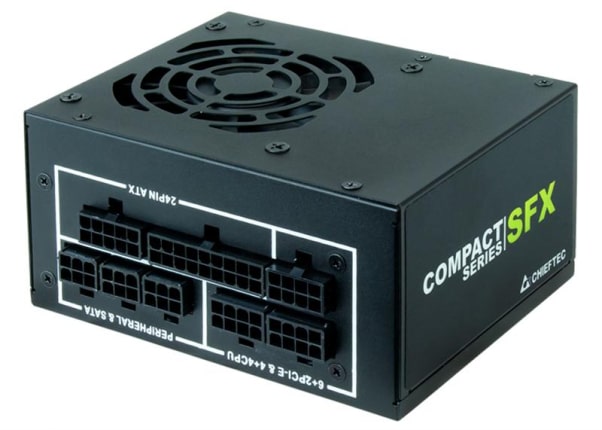
SFX PSUs are designed specifically for small form factor PC cases. Although your PC case might have room for a full-sized PSU, opt for SFX power supplies to avail every bit of wiggle room in your small form factor build.
7. Storage – M.2 Is The Best Choice
Small form factors might not have sufficient space for traditional hard drives, so get M.2 drives which is thin sized installed on M.2 slot. They are much faster and performance-oriented and to control temp most of the time come with M.2 heatsink.
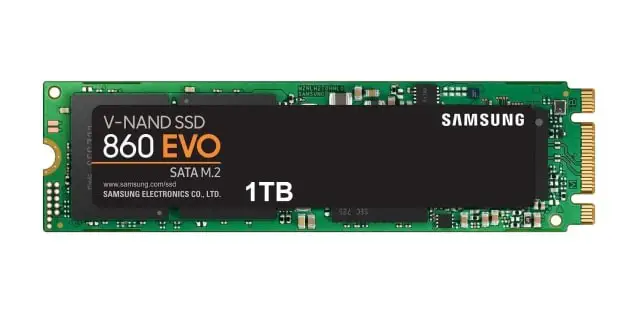
The only downside of this SSD type is that they typically cost more per gigabyte.
8. General Cooling
You might have optimized your SFF build to have as much cooling as possible, but you can only do so much optimization by placing it in an open and cool space. And if you’re putting it inside any storage or closed space, please install a cabinet ventilation fan as well.
FAQs
What is better, a Mini Tower or SFF PC?
Mini towers are slightly larger and stand upright, making for better airflow with a few extra features. But you will still need some desk space, where an SFF minimizes. So, if you need to pack your PC in a tight area, get SFF PC. But if the desk space isn’t the issue, you can go with the standard-sized PC because it has more features and better airflow.
What is dual-channel memory?
With dual-channel memory, the RAM has two direct channels to the processor instead of a single channel. Understandably, this makes for better performance – almost 2x better. With dual-channel, you get higher data transfer speeds, better FPS, and up to 10-20% more efficient CPU utilization.
What is considered SFF – micro-ATX or mini-ITX?
There are no hard guidelines to decide what qualifies as a small form factor. But anything smaller than the standard ATX-sized PCs are considered SFF. However, mini-ITX defines the small form factor because that’s when you start enjoying a very compact build at the cost of limited PCIe slots and overheating problems.
Is getting a small form factor PC worth it for gaming?
In today’s age, absolutely! You can run famous titles such as Minecraft or DOTA 2 in integrated processors alone. With a discrete graphics card, you can take things further and run heavier games as well. There would be some overheating issues and budget conditions, but SFF PC will work like a regular PC – just compacted into a tight space.
Final Thoughts: Is a small form factor PC worth it? Who should get an SFF Case?
A small form factor PC is worth only if it is a PC in your home you plan on using for heavy gaming or resource-demanding work tasks; you would be better off going with a standard-sized PC. This is because they are more budget-friendly, easy to find, and install.
However, if you travel a lot and want a more powerful PC for the price of a regular laptop, a small form factor should be your go-to choice.
Due to their small size an SFF PC for a home media unit let you enjoy an excellent movie on the big screen or pull up your favorite live streams as you chill on your couch. And since it does not require large computing power, you can squeeze the necessary equipment into a beautiful small case.
